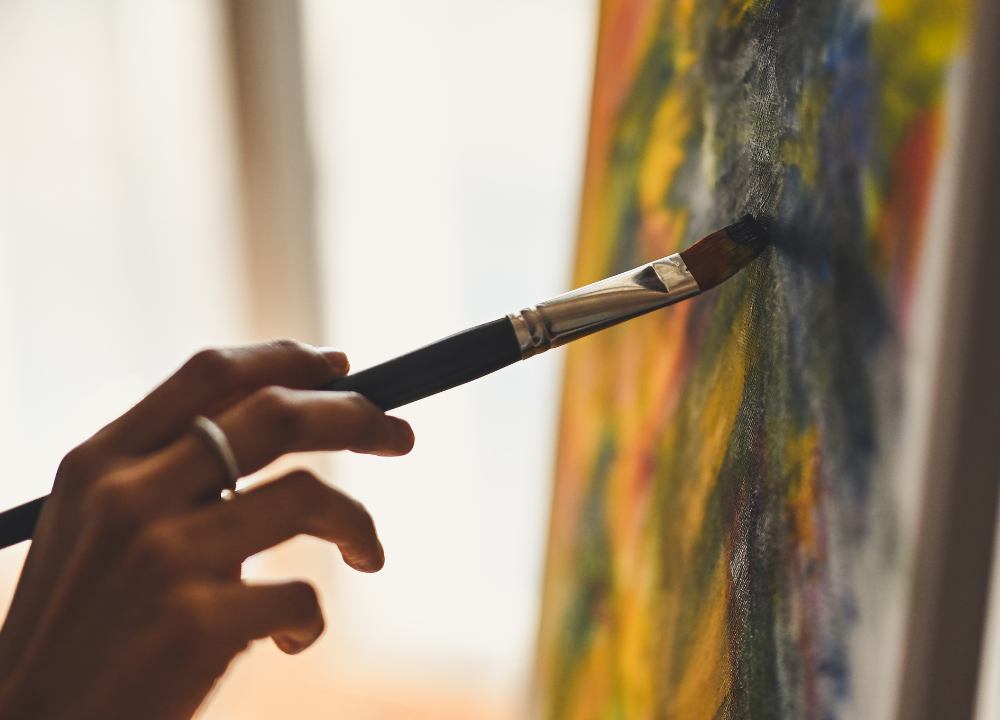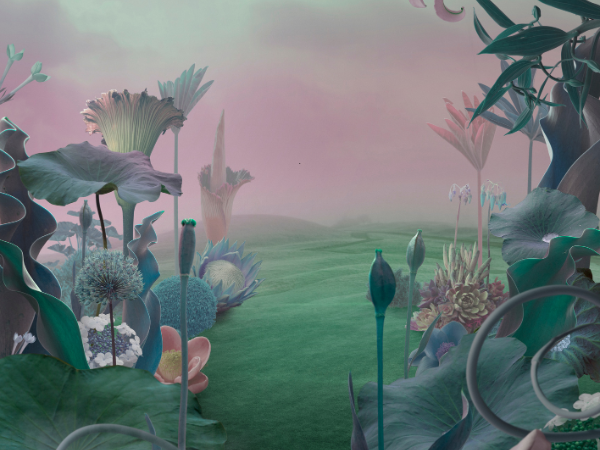Abstract Marvels: The Pinnacle of Creative Expression by Renowned Artists explores the extraordinary artistic achievements of renowned artists in concise detail. Abstract Marvels: The Pinnacle of Creative Expression by Renowned Artists reflects the pinnacle of artistic achievement, showcasing the extraordinary creativity and ingenuity of renowned artists.
Art is a genre that has captivated audiences for decades, challenging traditional notions of representation and pushing boundaries in terms of form, color, and expression. Renowned artists have fearlessly embraced this artistic approach, creating mesmerizing masterpieces that have left a lasting impact on the art world.
This article dives into the awe-inspiring abstract works of these artists, examining the powerful emotions and thought-provoking messages evoked by their art. From vibrant splashes of color to intricate geometric patterns, these abstract marvels invite viewers to delve into a realm of endless interpretations and personal connections. Join us on this journey through the mesmerizing world of abstract art and witness the stunning creative expression of these esteemed artists.
2. The Evolution Of Marvels
Marvels, in the realm of abstract art, have undergone a remarkable transformation over the years. From humble beginnings to groundbreaking innovations, renowned artists continuously pushed the boundaries of creative expression.
2.1 Early Influences
In the early stages of the abstract art movement, pioneers drew inspiration from various sources. Influenced by nature, emotions, and the human psyche, artists sought to capture the essence of their subjects in a non-representational form.
One prominent early influence was the Impressionist movement in the late 19th century. Impressionists challenged traditional artistic conventions by emphasizing the play of light and color, giving birth to a more subjective and emotive approach.
Another significant influence came from the Cubist movement spearheaded by Pablo Picasso and Georges Braque in the early 20th century. Cubism shattered conventional forms and perspective, depicting multiple angles and perspectives within a single artwork.
These early influences provided a solid foundation for the abstract art movement, encouraging artists to go beyond realism and explore the realms of imagination and emotion.
2.2 Exploring New Techniques
As the abstract art movement gained momentum, artists began to experiment with new techniques, further pushing the boundaries of creativity and expression. They sought ways to challenge the traditional notions of art and bring something unique and thought-provoking to the table.
One revolutionary technique that emerged was automatic painting, embraced by artists like Joan Miró and André Masson. With this approach, artists relied on their subconscious and chance elements to guide the creation of their artworks, resulting in spontaneous and abstract compositions.
Another breakthrough technique was collage, pioneered by artists such as Georges Braque and Pablo Picasso. By incorporating various materials and everyday objects into their artwork, they created visually captivating and textured compositions that challenged the traditional two-dimensional form.
With each new technique explored, artists honed their skills and expanded the realm of possibilities in abstract art. As a result, the Marvels that emerged captured the essence of their time, shining as a pinnacle of creative expression.

3. Masterpieces Of Creativity
Within the realm of abstract art, there exists a collection of extraordinary masterpieces that stand out as exceptional examples of creative expression. These works of art push the boundaries of imagination, captivating viewers and evoking deep emotions. In this section, we will explore two distinct aspects that make these abstract marvels truly extraordinary: their striking contrasts and unparalleled detailing.
3.1 Striking Contrasts
One key characteristic of abstract masterpieces is the use of striking contrasts to create visually captivating compositions. These contrasts can be seen in various forms, including color, shape, texture, and size. Artists skillfully blend vibrant hues with muted tones to create an interplay that demands attention. Bold geometric shapes juxtaposed with organic forms draw the viewer’s eye and create a sense of dynamic tension. The contrasting textures, such as rough and smooth surfaces, add an additional layer of complexity and intrigue to the artwork.
Furthermore, the deliberate use of contrasting sizes and scales within an abstract masterpiece can create a sense of depth and perspective. These variations in proportion capture the viewer’s imagination and invite exploration of the artwork. Whether it’s a dramatic juxtaposition of large and small elements or a subtle play on size, these contrasts add a sense of visual interest and intrigue to the overall composition.
3.2 Unparalleled Detailing
Another distinguishing feature of abstract masterpieces is their unparalleled detailing. Each stroke, line, and brushwork is meticulously executed to convey the artist’s vision. These intricate details often reveal hidden narratives, inviting the viewer to unravel the layers of meaning embedded within the artwork.
Abstract artists possess an innate ability to infuse their creations with intricate patterns and textures, adding depth and dimension to their compositions. It is through these intricate details that the artist’s skill and attention to craftsmanship shine. From delicate brushstrokes that create subtle gradients to bold textures formed by layers of paint, these details contribute to the overall richness and complexity of the artwork.
Moreover, the meticulous detailing in abstract masterpieces allows viewers to engage in a profound visual exploration. As one examines the minute intricacies of the artwork, new discoveries unfold, creating a sense of wonder and appreciation for the artist’s dedication to precision.
4. The Art Of Storytelling
The art of storytelling is an essential aspect of abstract marvels, elevating it to new heights of creative expression. Through symbolism, artists weave intricate tales that resonate deeply with viewers, while captivating narratives draw us into a world of imagination. In this blog post, we delve deeper into the ART OF STORYTELLING in abstract marvels, exploring the power of symbolism and the allure of captivating narratives.
4.1 Symbolism And Meaning
Symbolism forms the foundation of many abstract marvels, allowing artists to communicate complex ideas and emotions in a visual language. Each brushstroke, color choice, or shape carries profound meaning, inviting viewers to interpret the artwork on a personal level.
Through the ingenious use of symbols, artists can represent various concepts, such as love, freedom, and hope. For instance, a delicate butterfly might embody the transformative power of change, while a tumultuous sea can symbolize the depths of human emotions.
In abstract marvels, symbolism often works on multiple levels, combining several elements to convey a complex and nuanced story. It adds depth to the artwork, enticing viewers to analyze and interpret the underlying messages.
4.2 Captivating Narratives
In mesmerizing abstract marvels, captivating narratives beckon viewers to embark on a journey of imagination. Through vibrant colors, dynamic compositions, and thought-provoking techniques, artists create a visual narrative that unfolds before our eyes.
Abstract marvels can transport us to surreal landscapes, invite us to explore the depths of our subconscious, or take us on a whirlwind adventure through the artist’s mind. Each stroke and every detail contributes to the overall narrative, bringing the artwork to life.
These narratives in abstract marvels often transcend traditional linear storytelling, embracing ambiguity and allowing viewers to derive their unique interpretations. They invite us to question, ponder, and delve into our own experiences and emotions, fostering a deeper connection with the art.

5. The Impact Of Marvels
Abstract Marvels are not merely decorative pieces of art; they have a profound impact on society and culture. They inspire future generations and hold cultural significance that transcends boundaries. Let’s explore the different aspects of their impact.
5.1 Inspiring Future Generations
Abstract Marvels serve as a wellspring of inspiration for aspiring artists, fostering creativity and pushing the boundaries of artistic expression.
They inspire future generations by imbuing a sense of awe, curiosity, and possibility. Through abstraction, artists challenge conventional artistic norms and create thought-provoking works that spark new ideas and perspectives. Young artists look up to these masterpieces as a testament to artistic courage and innovation.
5.2 Cultural Significance
Abstract Marvels hold immense cultural significance, reflecting the evolution of society, history, and values.
These unique creations become a symbol of a particular era or movement, preserving the essence of the time they were created in. They can encapsulate the spirit of a generation, reflecting societal change, political movements, or technological advancements.
The cultural significance of Abstract Marvels extends beyond their aesthetic appeal. They become an integral part of the collective memory of a society, inviting critical reflection and engaging in dialogue about the complexities of our world.
The impact of Abstract Marvels reaches far and wide, inspiring and influencing individuals across generations. Their artistic power and cultural significance make them a pinnacle of creative expression, deserving appreciation and admiration from all walks of life.
Frequently Asked Questions
Who Was The Leading Figure In The Pop Art Movement?
Andy Warhol was the leading figure in the Pop Art movement.
Who Started The Pop Art Movement?
The Pop Art movement was started by artists such as Andy Warhol, Roy Lichtenstein, and Richard Hamilton.
What Was The Art Movement In The 1950s?
The art movement in the 1950s was known as Abstract Expressionism, which emerged in the United States. It focused on spontaneous, emotional, and non-representational artistic expression. Artists like Jackson Pollock and Mark Rothko were prominent figures in this movement.
What Are The Key Characteristics Of Pop Art?
Pop Art is characterized by vibrant colors, bold imagery, and the use of everyday objects and popular culture references. It emerged in the 1950s as a reaction against traditional artistic styles. Pop Art celebrates mass production and consumer culture and challenges the distinction between high and low art.
Conclusion
Marvel at the abstract marvels created by renowned artists that push the boundaries of creative expression. These masterpieces invite us to explore new perspectives and challenge our understanding of art. While it’s subjective, the power of abstract art lies in its ability to evoke emotions and provoke thought.
So, embrace the abstract, embrace the marvels, and allow yourself to be captivated by the endless possibilities of creative expression.




